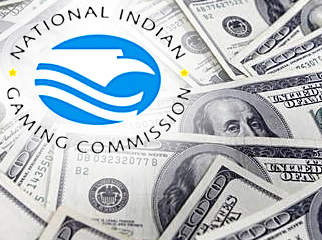 2012 proved to be a big year for Indian casinos in the US when total gaming revenue reached record numbers, topping out at $28.13 billion for the year. That figure was two percent better than what it did the previous year when all Indian casinos nationwide combined to earn $27.59 billion. But before people start celebrating, it’s worth pointing out that the gains from 2011 to 2012 was a lower percentage jump than the year before when revenues rose 3.4 percent to hit that $27.59 billion.
2012 proved to be a big year for Indian casinos in the US when total gaming revenue reached record numbers, topping out at $28.13 billion for the year. That figure was two percent better than what it did the previous year when all Indian casinos nationwide combined to earn $27.59 billion. But before people start celebrating, it’s worth pointing out that the gains from 2011 to 2012 was a lower percentage jump than the year before when revenues rose 3.4 percent to hit that $27.59 billion.
While it’s not necessarily an immediate cause for concern, California economist Alan Meister, who compiles the figures for Casino City’s annual Indian Gaming Industry Report, expressed caution in all of the optimism, saying that while the numbers to point in the right direction, the slower growth could be a sign of things to come moving forward.
Typically, it takes Meister a full year to compile all the revenue figures from all Indian casinos in the US so 2013’s numbers aren’t expected to be released until next year. Still, the slowdown in growth is pretty telling considering that Indian tribes used to enjoy double-digit percentage revenue increases on a year-per-year basis. All that changed, though, when the economy went to the toilet, culminating in 2009 when Indian casinos reported its only annual revenue decline since records were kept 24 years ago. Since then, these casinos have rebounded nicely, although not at the pace commercial casinos and race track casinos have done in the same time, when they saw growth of four and eight percent in 2012, respectively.
A number of factors can be attributed to this slower-than-expected growth, not the least of which is the increased non-Indian gaming establishments that have opened in recent years.
But there is a way Indian tribes can jumpstart growth of its gaming business and more and more tribes are recognizing that the opportunity lies in online gaming. It’s important to note that while the federal government recognizes these tribes as sovereign nations and, as such, their gaming businesses are usually up to their own devices with the caveat, at least for some states, that Indian tribes share a part of their casino revenues with their respective states in exchange for exclusivity rights on their jurisdictions. Online gambling is a part of that so its not surprising that a lot of Indian tribes, specifically in California and Oklahoma, are looking to launch their versions of online gambling sooner than later.
Some tribes are actually further along than others, or at least that was the case until the Cheyenne & Arapaho Tribes decided to scrap their plans to open the PokerTribes.com online gambling site because of financial constraints. But there’s opportunity in the online gambling sphere that Indian tribes can take full advantage of to drive up their revenues even more. Had PokerTribes.com been successful in its launch, it would’ve been able to offer real-money online gambling to customers outside of the US.
More recently, news coming out of California pointed to the California Tribal Business Alliance (CTBA), a group made up of the Pala Band of Luiseno Indians, the Paskenta Band of Nomlaki Indians of California, and the Viejas Band of Kumeyaay Indians, isn’t too keen to let PokerStars set up a tent in its back yard. According to the CBTA, its argument for not letting Stars do business in California is grounded on its belief that Stars was nothing more than a “bad actor” and since the CTBA believes it has the clout to affect any framework of a future online casino industry in California, it made it’s position pretty known that it’s now allowing PokerStars to join in on the fun.
There are a multitude of scenarios already being thrown out by numerous Indian tribes on how best to strategize moving forward with online gambling. It’s a power that these tribes can make full use of to further bump up their revenue stream, at least to the point where its old form returns.